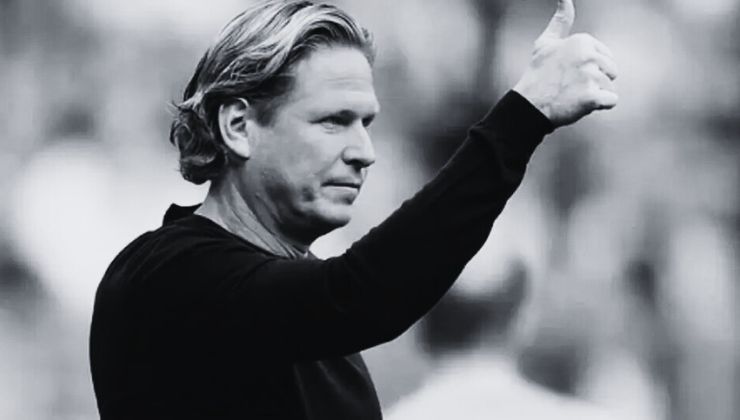Marcus Hamberg Flashback A Journey Through Time and Memory
Every generation has figures who capture moments of time in unique ways, connecting the past and present through art, memory, or innovation. Marcus Hamberg Flashback stands as a symbol of this connection—representing both a look backward and a reflection on how individual experiences shape creative expression. Whether viewed as a project, a personal reflection, or a work of storytelling, “Marcus Hamberg Flashback” invites us to explore how one person’s past can resonate deeply with the emotions and experiences of many.
The Essence of “Marcus Hamberg Flashback”
At its core, Marcus Hamberg Flashback is about recollection and rediscovery. It’s a narrative that invites readers or viewers to pause and think about how their past shapes their present. Through flashbacks, Marcus Hamberg takes us on a journey that combines nostalgia with lessons learned—each moment serving as a reminder that growth often comes from revisiting where we once were.
The concept of a “flashback” is more than just a storytelling tool here—it’s a bridge between memory and realization. Marcus Hamberg’s work delves into the emotional weight of time, illustrating how moments once forgotten can find new meaning when seen through mature eyes.
Early Life and Inspiration
To understand Marcus Hamberg Flashback, it’s essential to trace the origins of Marcus Hamberg himself. Born into a setting filled with creative influences, he developed an early fascination with human stories—particularly those built around memory, regret, and transformation. This passion became the foundation of his artistic journey.
As a young thinker, Hamberg was captivated by how memory works—how the smallest details, like a song or a photograph, can transport a person years back in time. This fascination naturally evolved into his storytelling style, where every flashback scene or moment is layered with emotion and depth.
The Creative Vision Behind the Flashback
Marcus Hamberg Flashback is not a simple recollection of events—it’s a well-crafted reflection. Hamberg uses the flashback technique not only to revisit earlier experiences but to interpret them with the wisdom gained over time. This technique creates an emotional rhythm in his work, allowing audiences to see how choices, mistakes, and memories shape who we become.
Every flashback in Hamberg’s storytelling carries both clarity and complexity. He avoids portraying the past as perfect or purely painful. Instead, he explores the subtle in-between spaces—where beauty and sadness coexist, where love and loss are inseparable. This nuanced perspective gives Marcus Hamberg Flashback its emotional power and relatability.
Themes Explored in “Marcus Hamberg Flashback”
Several key themes define Marcus Hamberg Flashback:
-
Memory and Identity: Hamberg explores how identity is built on layers of memory. Each flashback reveals parts of who we are, helping us understand our motivations and vulnerabilities.
-
Time and Change: Time doesn’t just pass—it transforms. Hamberg reflects on how people evolve and how our interpretation of events shifts as we age.
-
Love and Loss: Relationships play a major role in Hamberg’s flashbacks, showing how love can leave both warmth and scars that endure through time.
-
Growth Through Reflection: The project reminds audiences that reflecting on the past is not about dwelling—it’s about learning and moving forward with greater self-awareness.
These universal themes make Marcus Hamberg Flashback resonate across cultures and generations.
Artistic Style and Storytelling Approach
Hamberg’s creative approach blends cinematic detail with literary depth. His flashbacks are vivid—full of color, sound, and emotion—yet they maintain a reflective tone. Through carefully constructed imagery, he paints memories that feel both personal and universal.
His use of visual metaphors, such as mirrors, rain, or fading light, enhances the storytelling, symbolizing how memories can blur, distort, or come sharply into focus. The tone of Marcus Hamberg Flashback is deeply introspective, offering a meditative experience that invites viewers or readers to reflect on their own histories.
Reception and Cultural Impact
Since its introduction, Marcus Hamberg Flashback has drawn attention from audiences who appreciate art that intertwines personal reflection with universal emotion. Critics have praised Hamberg’s ability to transform simple memories into profound storytelling moments. His flashback sequences, whether written or visual, have become a point of discussion among those who value narrative structure and emotional authenticity.
Culturally, the work resonates with an era that values mindfulness and self-discovery. In a world that moves fast, Marcus Hamberg Flashback reminds people to slow down—to look back, understand, and find meaning in what once was.
Lessons from “Marcus Hamberg Flashback”
What makes Marcus Hamberg Flashback particularly significant is its message about the healing power of reflection. Hamberg teaches us that the past is not something to escape, but something to understand. Each flashback, no matter how painful or joyful, becomes a stepping stone toward clarity.
By embracing memory instead of avoiding it, we gain wisdom. Hamberg’s perspective encourages audiences to turn introspection into strength—to acknowledge that even our most difficult moments have value in shaping who we are today.
Conclusion
Marcus Hamberg Flashback is more than a creative piece—it’s a mirror that reflects the intricate relationship between time, memory, and growth. Through his unique storytelling style, Marcus Hamberg shows that the past is never truly gone—it lives within us, influencing every decision, every emotion, and every dream.
The flashbacks he shares serve as universal symbols of how deeply personal stories can connect people across generations. In revisiting his memories, Marcus Hamberg invites all of us to do the same: to look back not with regret, but with appreciation for the lessons and emotions that continue to define us.
Ultimately, Marcus Hamberg Flashback is a timeless exploration of the human experience—a reminder that every memory, no matter how distant, has a story worth revisiting.
